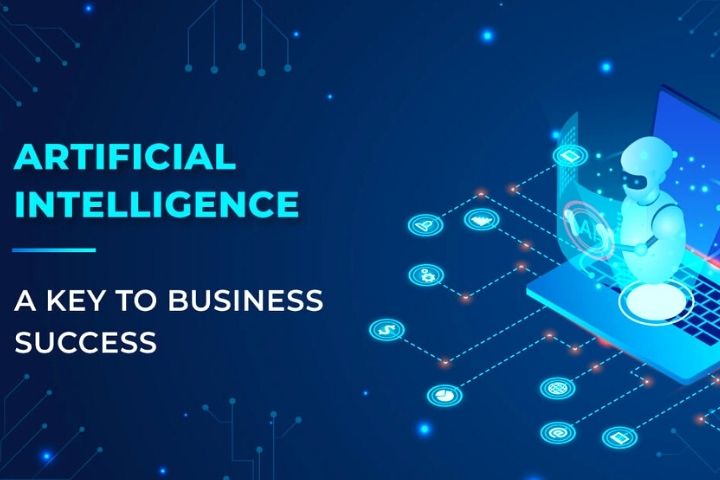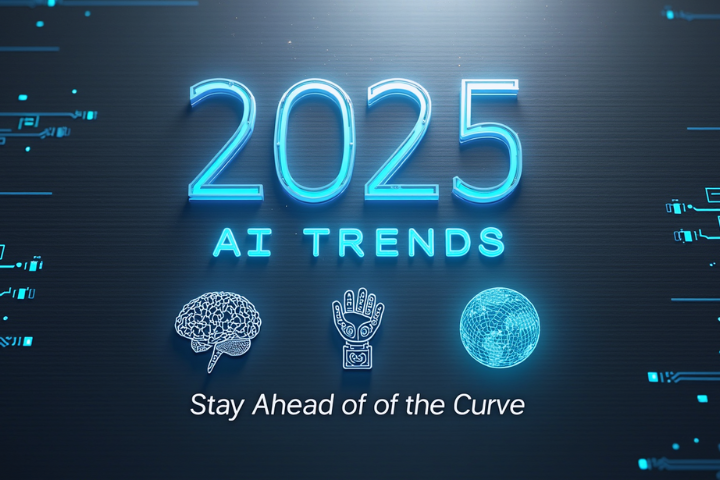Artificial intelligence is growing exponentially and is taking centre stage at showing potential across industries. Now that every new product has inbuilt virtual assistants, while chatbots are answering customer queries. Meanwhile, companies such as Google and Microsoft are integrating AI into their entire tech stack.
For businesses, practical AI applications can demonstrate in all ways, right from mining social data to driving engagement in customer relationship management to optimizing logistics and efficiency when it comes to tracking and managing assets.
How Are Businesses Using Artificial Intelligence?
Artificial intelligence (AI) is steadily evolving and progressing into everyday business use. From management to trend predictions.
Application of artificial intelligence in business
You can implement AI in business to:
- Improve customer services – Can set up a virtual assistant to engage customers to provide real-time support.
- Automate workloads – One can use machine learning algorithms to categorise work and automate the task, which is done on a regular basis.
- Optimise logistics – Using AI-powered image recognition tools helps you monitor the items, plan transport routes, etc.
- Prevent outages – Use irregularity detection techniques to identify defective patterns.
- Predict performance – Use AI applications to determine when your goals are achieved.
- Predict behaviour – Use ML algorithms to analyze online behaviour.
- Manage and analyze your data – AI can help you to analyze the data of your customers.
- Improve your marketing and advertising – AI helps to track your customer’s behaviour and helps in targeting the right audience. And AI also helps in some of the marketing tasks.
Here, we provide tips from experts On Introducing Artificial Intelligence In Your Business, ensuring that your implementation is successful.
1. Get Familiar With AI
Take your time to understand and get familiar with what AI can do to your business. The Great Learning offers a wide range of AI courses through its partnerships with Texas McCombs (The University of Texas at Austin). You should take advantage of the online resources available to familiarize yourself with the basic concepts of AI. Techsplashers recommends some of the online courses offered by organizations such as Microsoft, edX, Great Learning, and Udacity. This is the easy way to get started with AI and to increase your knowledge in ML and predictive analytics.
The following are several online resources (free and paid) that you can use to get started:
● Udacity’s Introduction to AI course
● Stanford University’s online lectures on Artificial Intelligence
● Artificial Intelligence certification: Online mentorship program by Texas McCombs
● edX’s online AI course from Columbia University
● Microsoft’s open-source Cognitive Toolkit for deep-learning algorithms
● Google’s open-source (OS) for machine intelligence
● AI open-source code Resources from the AI Access Foundation
2. Identify The Problems That AI Can Solve Your Business Problems
Once you're up with the AI basics, explore different ideas related to artificial intelligence. Think of how your knowledge can help you in adding up the AI capabilities to your existing products. To be precise, your company should have specific use cases in mind to solve your business
problems and provide value.
3. Prioritize The Actual Value
Next, it's easy to get lost in AI discussions. So, you need to prioritize the financial value of the various AI implementations you’ve identified. To prioritize, look at the feasibility and put them into a 2×2 matrix. This should help you prioritize based on immediate goals and financial value for those goals.
4. Acknowledge The Internal Capability Gap
Knowing the difference between what you want to accomplish and what not to from a tech and business perspective before launching AI implementation is very important.
5. Set Up A Pilot Project
Once you are ready from a business and tech standpoint, then it’s time to start integrating. Here, start small, have project goals in mind, and be aware of what you know and what you don’t know about AI. Usually, a pilot project takes 2-3 months. After the pilot project is completed, you should be able to do the value proposition for your business. Here, it is important to take advice from both industry experience and people who know about AI. This helps to achieve your goal.
6. Form A Taskforce To Integrate Data
Before implementing ML into your business, clean your data to avoid garbage in/out scenarios. Therefore, a significant step toward obtaining high-quality data is to form a cross taskforce, integrate different data sets, and sort out inconsistencies so that the data is accurate with all the dimensions required for ML.
7. Start Small
Apply AI to a minor sample of data instead of taking too much at a time. Start small, use AI at a smaller pace to prove value, collect feedback, and then expand accordingly.
8. Include Storage
One needs to consider the storage requirements to implement an AI solution after you ramp up from a sample of data. Taking time in improving storage capability is a positive impact on AI storage for data ingest, workflow, and modelling.
9. Incorporate And Work On AI Daily
With the automation provided by AI, workers can make AI tools to work daily. By this, some employees can get affected by their job, so being transparent on how the tech works can give employees an under the hood experience so that they can visualize how AI augments.
10. Build With Balance
While building an AI system, requires a blend of tech needs as well as the research project. To achieve this blend, companies need to establish sufficient bandwidth for storage, the graphics processing unit (GPU), security, and networking.
The Future Of Artificial Intelligence
How can we implement artificial intelligence in our business? It's hard to say how to implement it for every sector, but most experts say that the most “common tasks” can be taken over by AI. This means robots will be extremely useful in our daily life. AI is starting to make a “Driverless car”, which was once considered impossible. Here are some of the examples to show AI in different industry segments.
AI in:
● B2B And Customer Experience – FedEx And Sprint’s Predictive Analytics
● B2C And Marketing – Coca Cola’s Big Data-Driven Success
● eCommerce And Retail – Target’s And Asos’ Visual Search, Nike’s Customization Programs And User Engagement




![Top 10 M4uFree Movie Alternatives | M4uFreeMovie in 2022 [Updated]](https://www.techsplashers.com/wp-content/uploads/2022/03/Top-10-M4uFree-Movie-Alternatives-M4uFreeMovie-in-2022-Updated.jpg)







Leave a Reply